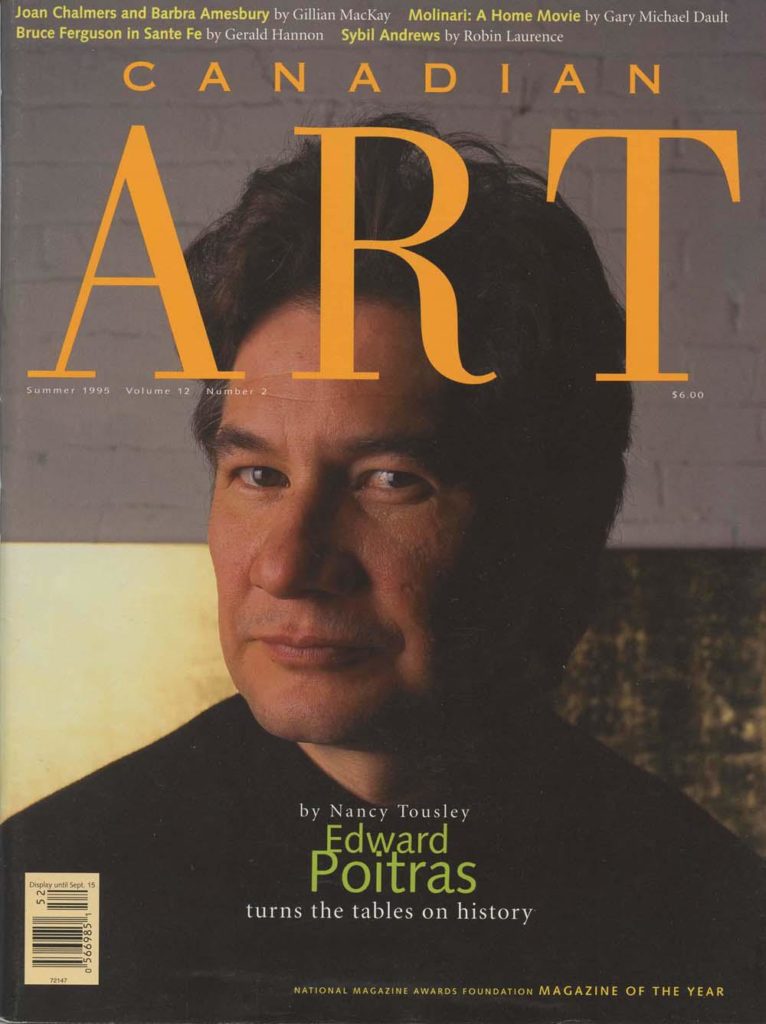A bony coyote sits on a pile of white granite books and looks out through the window at a pile of bones. Is he howling or laughing? From his vantage point on the “Old World”—the Canadian pavilion tucked in among the trees of the Giardini Pubblici in Venice—he ponders the “New World” back home, and he’s doing his thinking in metaphors.
Pile of Bones was the name for Regina, Saskatchewan, before officials renamed the site of the provincial capital for Victoria Regina. This, the Queen City of the Plains, is where Edward Poitras, the artist who has put a coyote at the centre of his Venice Biennale installation, lives and works. The original name derives from the Cree word “oscana” for bone, and refers to the history of Poitras’ Indian and Metis ancestors. Bones left after the buffalo hunts littered the prairie; settlers, erasing the history, shipped them east to be made into fertilizer. It could be said that Poitras inhabits a complex reality somewhere between Regina and Pile of Bones, a place where he is as agile and elusive as a coyote, the wild dog with the Aztec name.
So begins our Summer 1995 cover story. To keep reading, view a PDF of the entire article.









